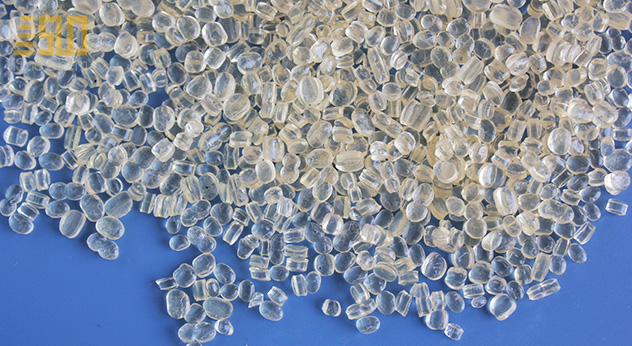1. Solvent method
Add polypropylene resin and carbon tetrachloride (or other solvents) to the reaction at a ratio of 1:11-1:16
In the kettle, after the polypropylene is dissolved at a temperature greater than 100°C, a small amount of initiator azobisisobutyronitrile (or
Benzoyl peroxide), then pass chlorine gas at normal pressure and constant temperature (Tmax is 100~130°C) to carry out chlorination reaction. After the product reaches the required degree of chlorination, remove residual chlorine gas and HCL and remove chlorination Tetrachloride in liquid
Carbon, and then dried, crushed and packaged to obtain CP products.
This method is currently the most commonly used, characterized by more uniform chlorination and easier reaction control, but the production process
The loss of medium solvent is large, the production cost is high, and the operating environment is harsh. Because the product contains residual solvent, the product
The quality is also poor. This method has been restricted abroad and will be eliminated.

2. Solid phase method
The solid phase method is to place the dry polypropylene powder and the inactive powder to prevent carbonization in a fixed with a trap
In the bed or fluidized bed, chlorine gas is chlorinated under ultraviolet light to obtain product iSuoChem CPP.
The method is simple, less corrosive to equipment, and low in production cost, but the reaction process is difficult to control and the reaction
Heat is not easy to export, and the product is easy to coke, change color and stick, so it is rarely used in industrial production.

3. Semi-aqueous method
Add the crushed polypropylene powder and carbon tetrachloride or chlorobenzene to the reactor at a ratio of 1.5:10
In addition, add one-quantity of water, stir and heat up to make the solution suspended. Oxygen is introduced under normal pressure 45~70t~
Gas, and chlorination reaction under UV light, after the generated product chlorine content meets the requirements, exclude dissolution
Residual chlorine in the chlorinated liquid, the chlorinated liquid is analyzed with hot water> 96"C (or precipitated with methanol, ethanol, acetone,
Separate CPP from the solution), then wash and dry to get the finished product.
4. Aqueous method
Put polypropylene powder, additives and a certain amount of water into the enamel reactor, stir the emulsified reaction liquid,
Replace the air in the reaction liquid with inert gas or oxygen, heat up to 90°C to pass chlorine gas, stage oxidation, keep the kettle
Temperature 90~130°C, control the chlorine flux and helium flux rate, stop the helium flux after the chlorine content of the product reaches the requirements, and remove
The residual chlorine and HCL in the reaction solution are removed, and the product is prepared by deacidification, neutralization, washing and drying. .
The method is simple in process, convenient in operation, low in production cost, and easy to treat "three wastes".
Advanced production technology vigorously promoted.